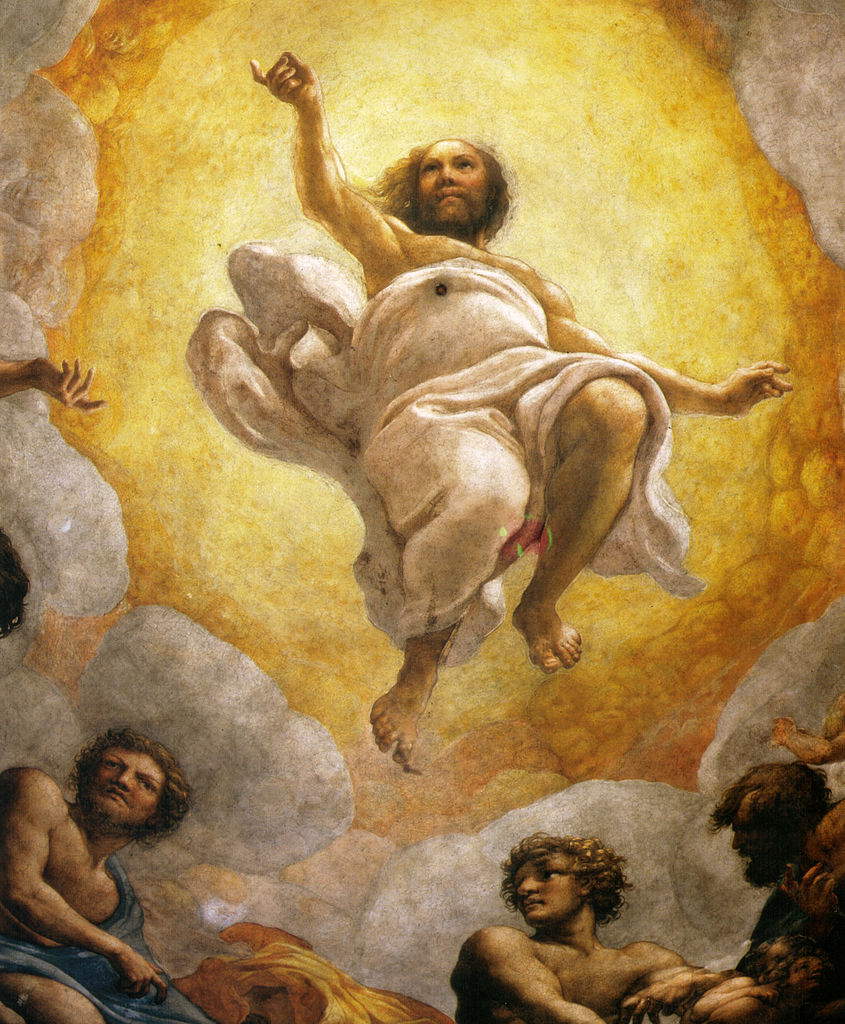I present here a semi-ignored documentary by Giuseppe Bertolucci about Father Attilio’s visit to Correggio’s dome in the abbey church of San Giovanni, Parma during the work I carried out in reviewing the restoration of the frescoes carried out between 1988 and 1990 (Bruno Zanardi).
In the early 1980s Parma was becoming a small capital of restoration in Italy. Tired of the inefficiency of the local superintendencies - the restoration of Correggio’s frescoes in the dome of the cathedral had been going on for about ten years without anyone ever getting on the scaffolding that occupied the entire Presbytery of the church - the Curia of Parma, in the person of the then Vicar General of the city’s diocese, Monsignor Franco Grisenti, a man of great organizational skills and of ’equally great certainty of the Church’s rights over its own patrimony as opposed to those of the state bureaucracy, on the advice of the then president of the Pontifical Commission for Sacred Art in Italy, Monsignor Giovanni Fallani, asked two former directors of the Central Institute for Restoration, Pasquale Rotondi and Giovanni Urbani, for their willingness to serve as consultants for the restoration of the entire Baptistery of Parma: stone facing and antelamic sculptures of the interior and exterior of the monument and Romanesque-Byzantine decoration of the dome and niches. A remarkably complex intervention that was entrusted to the writer, fresh from his studies at an Icr that was still the undisputed point of reference in the world on that subject, and who had just begun the restoration of the reliefs of the Trajan Column. A restoration, the latter, that had put me in direct contact with the Scuola Normale of Pisa and with some of the best minds then running through the world of conservation and the history of ancient art and beyond. From the superintendent of the Imperial Forums Adriano la Regina, to Salvatore Settis, Giovanni Agosti, Vincenzo Farinella, Eileen Romano, Sylvia Ferino and so on.



 Dome of San Giovanni
Dome of San Giovanni Dome of San Giovanni
Dome of San GiovanniAnd here another protagonist of that brief and fortunate cultural moment in the city of Parma comes into the picture. My meeting with a then young food industrialist, Marco Rosi, founder of “Parmacotto,” who agreed to do one of the first sponsorships of artwork restoration. In the case, to finance an overhaul of the restoration of Correggio’s dome in the abbey church of San Giovanni, Parma, which had been done some 40 years earlier. At that point it was a matter of choosing who should write the text that illustrated not so much the intervention on the frescoes, but that extraordinary masterpiece. A choice that was made by the youngest and most cultured of our generation, Giovanni Agosti, saying that perfect would be to ask for a text from a historian of culture before even art, Francis Haskell, and a pure writer so that he would operate a linguistic innovation of art criticism, Alberto Arbasino. But also one of the important Italian poets of the twentieth century, Attilio Bertolucci, a Parma native who had long lived in Rome, was asked (through Pietro Ricciardelli) to tell his son Giuseppe about his relationship with Correggio of Parma in a short film.
Marco Rosi also generously financed those two texts and Giuseppe Bertolucci’s “short film.” Texts and film remained essentially unknown in the art-historical culture of the second half of the twentieth century because of the jealousies of superintendents, local and otherwise, and because of the great controversy that immediately surrounded the initiative of the Curia of Parma to have two renowned experts, Rotondi and Urbani, both former directors of Icr, direct the restoration of the Baptistery. And this was for two reasons. One, obvious, to see themselves dispossessed of “bureaucratic exclusivity” over the artistic heritage. The other, more important, that the restoration of the Baptistery had been preceded by a project, a unique fact then in Italy, carried out first by testing in a “sample area” the work to be done and the time and cost required to carry it out. A project that gave a surprising result. That the estimated money needed to restore the entire Baptistery of Parma, all of Antelami’s sculptures, the Romanesque-Byzantine decoration of the dome, the frescoes in the niches, the portals and the stone face of the exterior and whatnot were the same as those paid by the municipality of a neighboring city to Parma to restore a large fountain with an important 16th-century bronze sculpture at its center, funding approved by the local superintendency.
The documentary in which Attilio Bertolucci climbs the scaffolding and comes face to face with Correggio is reproduced here. To follow, in future issues of the magazine, are texts by Haskell and Arbasino. And here I add a small tribute to Eugenio Riccomini, longtime superintendent in Bologna and Parma, who left us a few days ago. Kind man and great storyteller. May the earth be light to him.
Link to see the documentary: https://www.youtube.com/watch?v=c0E9uwinTDc
Warning: the translation into English of the original Italian article was created using automatic tools. We undertake to review all articles, but we do not guarantee the total absence of inaccuracies in the translation due to the program. You can find the original by clicking on the ITA button. If you find any mistake,please contact us.